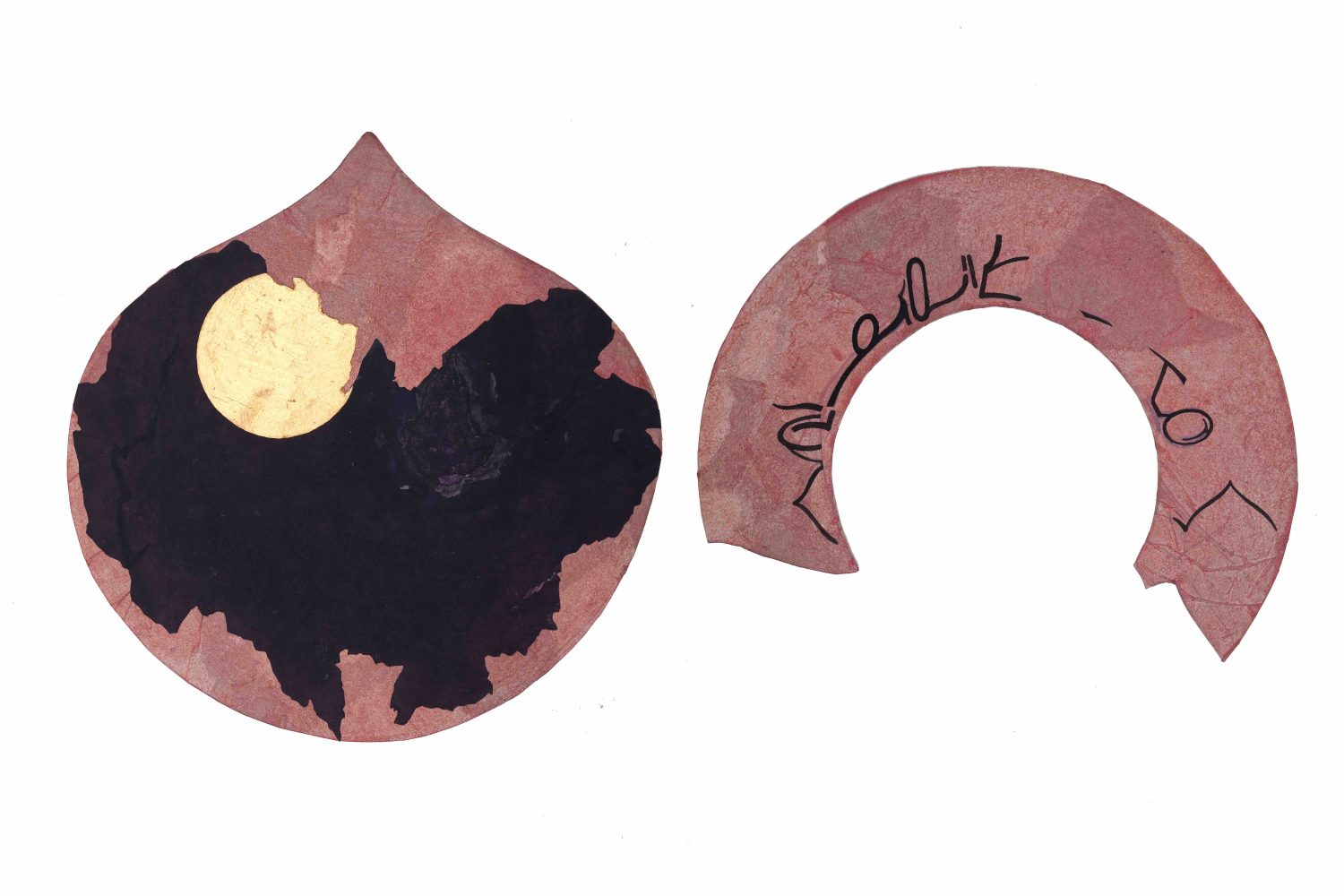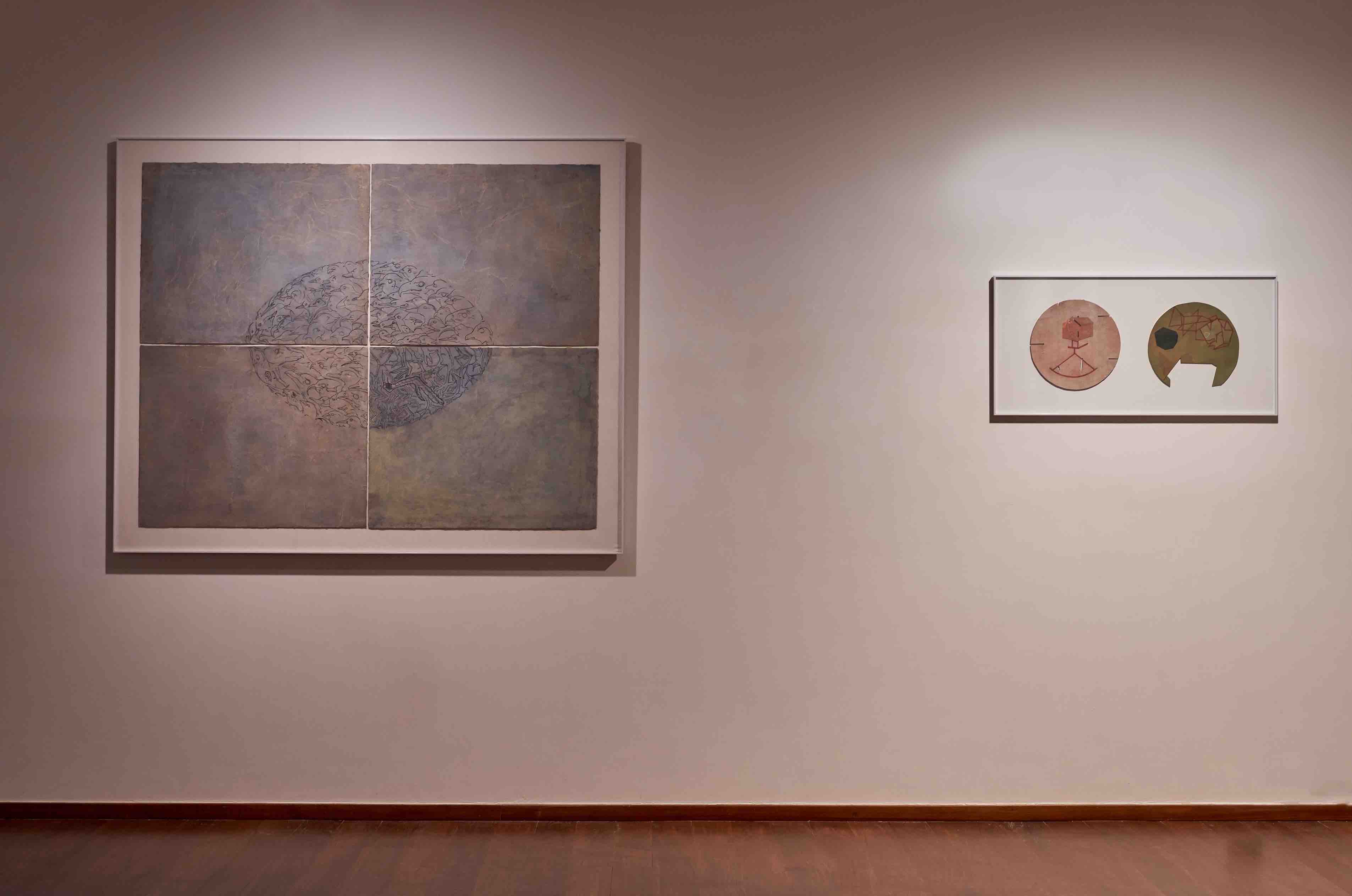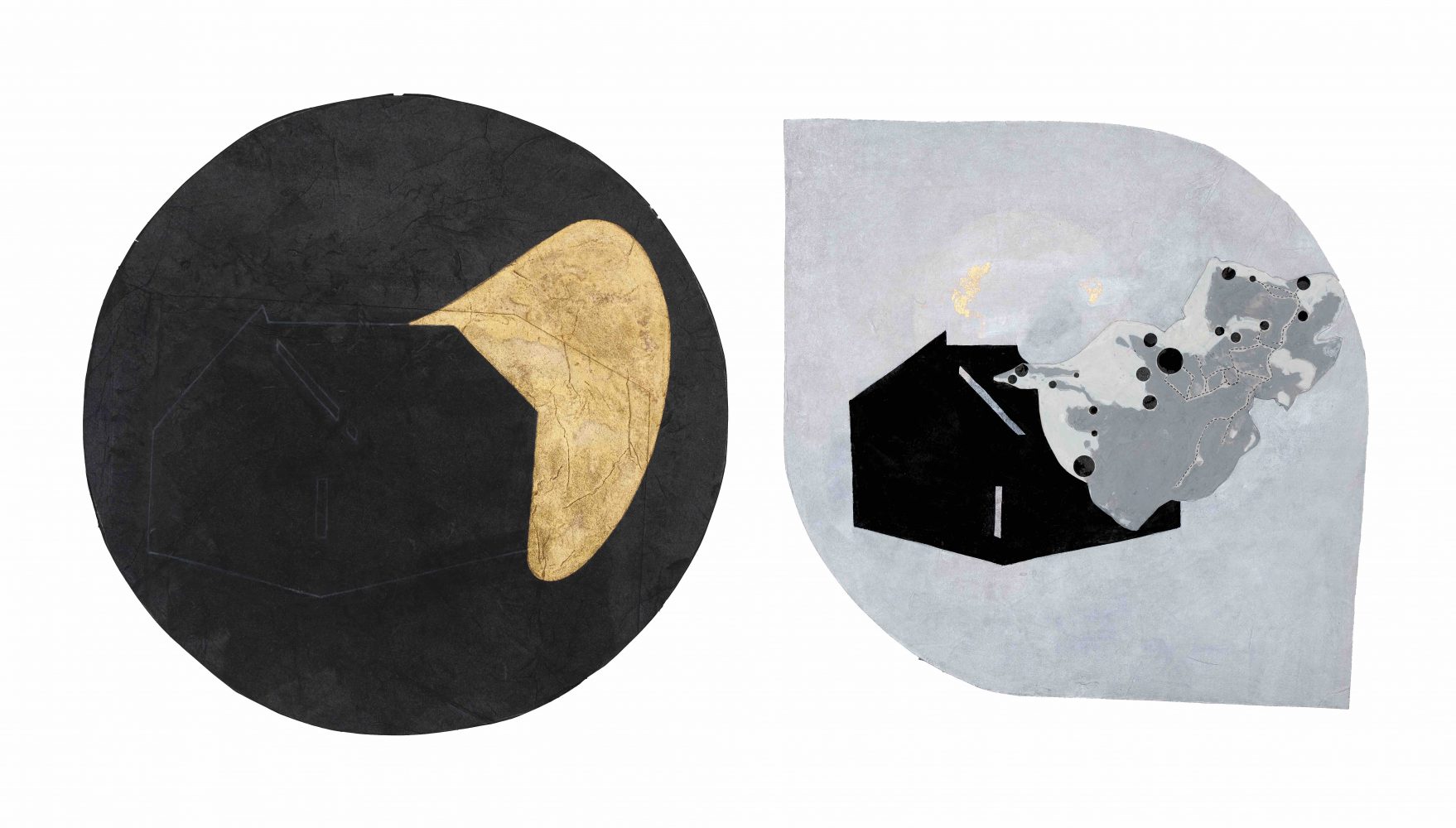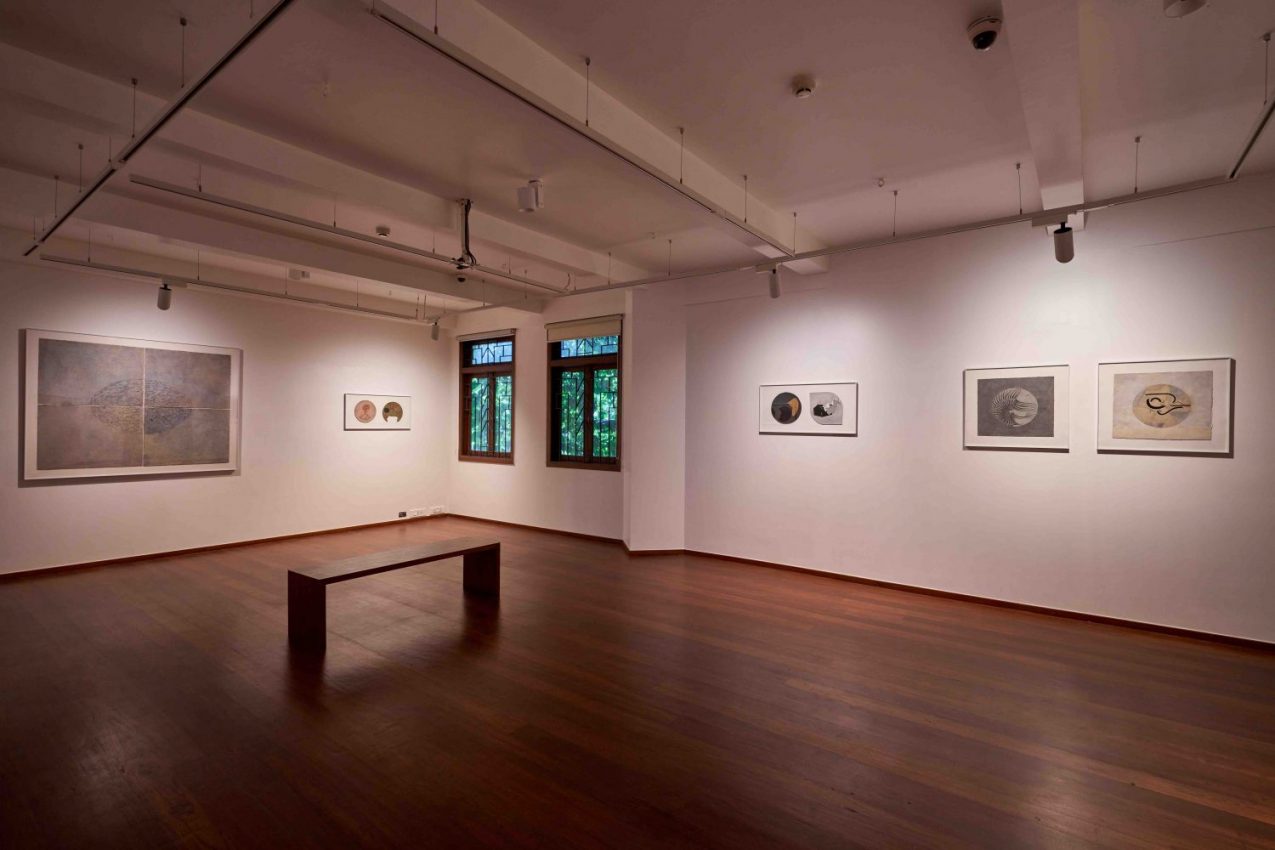
From the beginning, the experience of ‘The Shape of Home’ is, a negotiation of space and time. The exhibition showcases work by Delhi-based artist Tanmoy Samanta. The show hosted by a commercial art gallery called Tarq which is located within in a large 20th century palace, in an up-market area near the Gateway of India, in Mumbai. The palace was converted into individual homes and offices decades after it was built, and the gallery occupies a duplex corner suite of the premises. Several large rooms were specifically modified to fit display spaces and offices and now cater to these type of contemporary requirements. From the location of the gallery, to the theme of the show: ‘The Shape of Home’ explores the theme of metamorphosis.
The title of the show is indeed domestic and suggests an engagement with intimate spaces—of moments of cohabitation, cooking, and coping that come from within such contexts. Samanta does not restrict himself to mundane concerns. He dwells on the actual physical structure of home, on materials used and a space outlined by a roof, doors, windows, and floors. This concept of home extends also to the world of plants, animals, encompassing the planet and into the cosmos, here asking us to consider both the macro and micro elements that comprise our total understanding of home

In this exhibition, Samanta laments on the destruction of habitat(s) in a series of pale watercolours, on delicate rice paper. Gauche and pigments are almost translucent on paper and yet here draw a relationship with the earth and the materials that are present in the earth’s surface and are mined from it. Using delicate forms and a gentle hand, the show traces imprints on the earth itself, these range from fossils, which are embedded into the elements of the planet; to human bones that almost never decomposes. Not all impressions are permanent; some are as fleeting as a bird’s shadow, and others are fragile as a fragment of pottery from an ancient art collection. Samanta’s artworks are clustered in sets that demarcate specific patterns, for instance in The Birds in the Rain, viewers see a configuration that is remnant of composite figures fitted together, in this case, an egg which is of course symbolic of the first home of life for birds and other creatures.
In this show it is tempting to ask oneself; what home does Samanta seek? Is it a cocoon? A place to germinate? Or something amorphous, constantly evolving and shape shifting, as explored in a series of ten diptychs, that the show is named after? Like many exhibitions that opened to the public in 2021, much of ‘The Shape of Home’ was also produced during the pandemic. The forced isolation of this unprecedented period meant that we viewed the world largely through a window, looking out at life from afar, much akin to an astronomer studying space through a telescope. The dominant use of the circle as an outline here resonates with this same sense of celestial observation. This is made apparent by lines that draw a structural plan of a home, which in turn are similar to constellations, and the stars that draw a path for them. However, not everything can be contained neatly in a circle, and certainly not human “development”. The sphere changes form, just as much as the forms it contains continues to evolve also. One half of IX in the series could be a plastic bag, but in the tenth part, the circle resembles a cellular organism that is breaking into two forms, just as it did in the very beginning of life. If not the origin, what if this is the moment of divorce and destruction—a separation of the human and the natural world? Can one even survive without the other?

The theme of destruction in the exhibition also implies a loss of memory, and erasure of a collective past. In The Memory of Homes, Samanta demarcates the receptacles of life and memory—from homes, to eggs, to embryo figures and lines that evoke early some of human’s earliest figurative depiction in cave art. Memory mingles with melancholia, and the sentiment is echoed throughout the show, while The Waxing and Waning Moon maps the movement made by fossils to calligraphic forms—indelible, but vulnerable to an eclipse. Samanta’s artworks resonate with those by the late artist Zarina Hashmi, in exploration of themes, restraint, and a certain meditative approach to visual language. While making artworks in exile (or away from “home”), Hashmi addresses traumas of the past, of communities and the subcontinent; Samanta is preoccupied with the actions of the anthropocene, which has been traumatising the planet, especially in the last century.
Ranjit Hoskote, who wrote the catalogue essay accompanying this exhibition, describes Samanta as ‘a mapmaker of outline and infill, void and plenum, germinating plants and migrant clouds.’ In his role as a cartographer, Tanmoy Samanta maps the destruction the human race (has already) unleashed, the destroyed habitats and the marginalisation of all those who cohabit the planet: birds, animals, reptiles, etc. In his visualisations, the species that were eradicated, through human intervention or, otherwise, still retain a physical presence or a homage to what once was. ‘The Shape of Home’ reminds us that we are all contained in a sphere—all our pasts, presents, and futures—and it is here that we too, with time, will be annihilated. Tanmoy Samanta, like a soothsayer, recognises omens, and in a quiet, cryptic voice, sounds a warning to his audiences.

‘The Shape of Home: Tanmoy Samanta’, TARQ, Mumbai, 11 November–30 December 2021.














